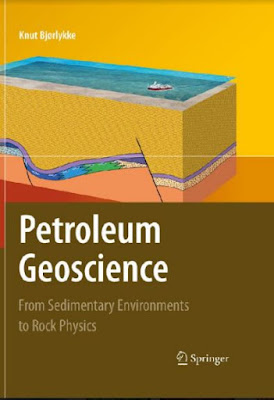Preface
Petroleum geology is not a well-defined academic subject. It includes many different aspects of the Earth sciences which are used in petroleum exploration and production. Nearly all types of insight can in some cases be useful in petroleum exploration,but there are some disciplines that are most relevant.
Since petroleum is formed and hosted in sedimentary rocks, sedimentology is critical. Palaeontology is important for dating rocks and carbonate reservoirs may consist mostly of fossils. Structural geology and basin analysis are also vital for reconstructing the migration and trapping of petroleum. Geochemistry and petroleum chemistry are also important.
Geophysical methods are essential for logging and seismic exploration, and recently electromagnetic methods have also been used in exploration and production. Most universities do not offer specific courses in petroleum geology/geophysics and only a few have a Masters or PhD programmes in this field. Oil companies therefore recruit many geologists with little training in these subjects.
In this book we have tried to give a basic introduction to disciplines relevant to petroleum exploration and we have also included some aspects of petroleum production. Since so many different disciplines are included in this book it is clear that it has not been possible to make in-depth treatments of each of these.
This book provides a relatively condensed and precise presentation of the basic facts in each subject and it was therefore necessary to limit the number of field examples and cases. We have attempted to write a book which requires only a limited background in geology and geophysics. Some of the chapters are therefore relatively basic, but others are more advanced and we have then included more discussions and references to original research papers.
The reference to the original literature had to be limited because of the wide range of disciplines. In the past textbooks often included very extensive lists of references which were very useful when searching for relevant literature. With the electronic data bases available now it is easy to search for relevant references and new textbooks.
In this textbook we want to bridge the gap that often seems to exist between geophysical and geological disciplines and there is an emphasis on sediment compaction, fluid flow and rock physics.
The skills required from a petroleum geologist have changed greatly over the years.
Traditionally the main task was to identify reservoir rocks, structures with closure and the proximity of a mature source rock. We are running out of “the easy to find” and “easy to produce” oil and gas, and exploration and production technology is becoming more advanced. Production of unconventional oil (tar sand, oil shale) and also tight gas reservoirs and gas shale, requires a stronger background in mineralogy, chemistry and physics.
The geophysical methods have become increasingly sophisticated and it is now often possible to detect the presence of gas and oil prior to drilling based on seismic data. Electromagnetic methods that were primarily used in mineral prospecting are also used to find oil. As conventional oil is becoming more scarce more geologists are becoming involved with exploration and production of heavy oil, oil shales and shale gas.
This requires a stronger background in the chemistry and physics of petroleum and also in mineralogy and rock mechanics (rock physics). Physical and chemical modelling is also very important. Even if alternative sources of energy are being developed the world will require fossil fuels for several decades. It is a great challenge to limit the environmental consequences of such production.
Download




No comments:
Post a Comment